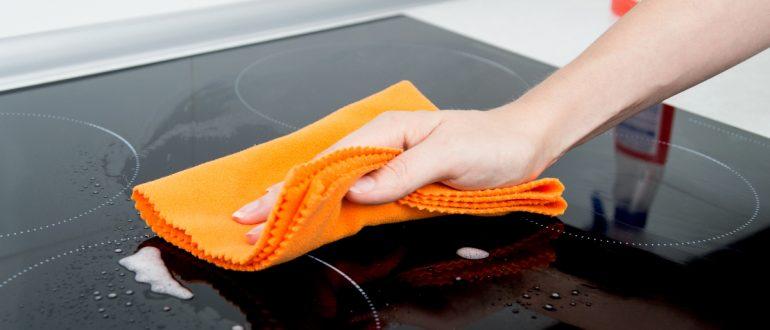Despite the fact that ceramic hobs appeared on the market relatively recently, today they can be seen in many kitchens. It is on them that experienced housewives create their best culinary recipes. However, when working in the kitchen, it is impossible to do without dirt. Boiled milk can always run away, broth splash out or flour just wake up.
This leaves streaks, stains and other contamination on the smooth, clean surface. Of course, these need to be eliminated to make the kitchen look perfect. But not every housewife knows how to clean a glass-ceramic hob from burnt fat and carbon deposits without leaving any scratches. Therefore, we will give some useful tips that will allow you to cope with the task quickly and flawlessly.
Content
How to clean glass ceramics - choose the best product
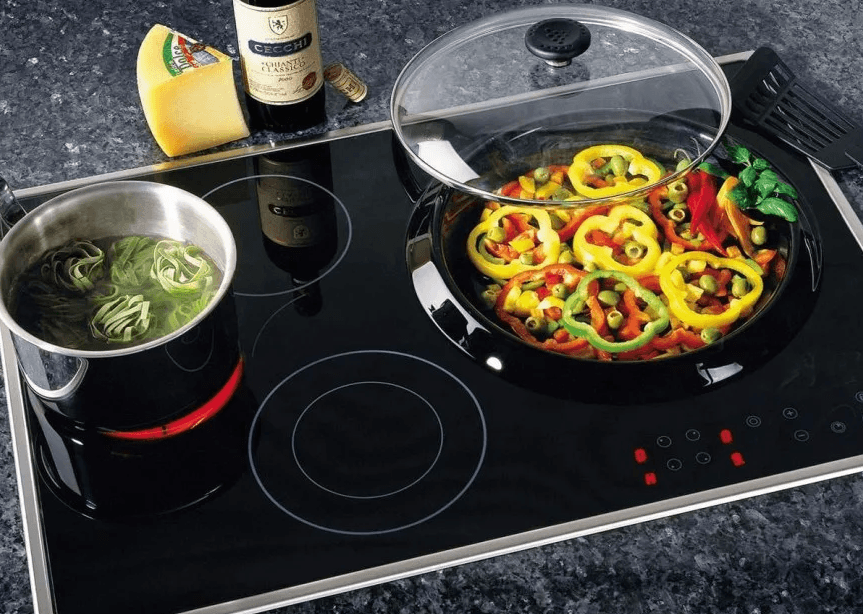
Before starting work, you need to select the right materials - then nothing will distract you during the cleaning process. First of all, we list the tools that you will definitely need when working:
- Special scraper with replaceable blades (usually comes with the stove). You will need it if you need to clean the ceramic hob from burnt food.
- Soft sponge - any one made of high-quality, dense foam will do.
- Microfiber cloth - perfectly remove non-complex dirt, leaving no streaks.
- Melanin sponge - they can be purchased in many stores, and working with them is surprisingly easy and simple.
It is advisable to have all the tools listed above on hand. Then cleaning will take a minimum of time and effort. Some housewives also use a rubberized napkin, which can be purchased from the automotive department. Thanks to its softness, it is guaranteed not to scratch the surface. And its high density allows it to remove small stains without leaving streaks.
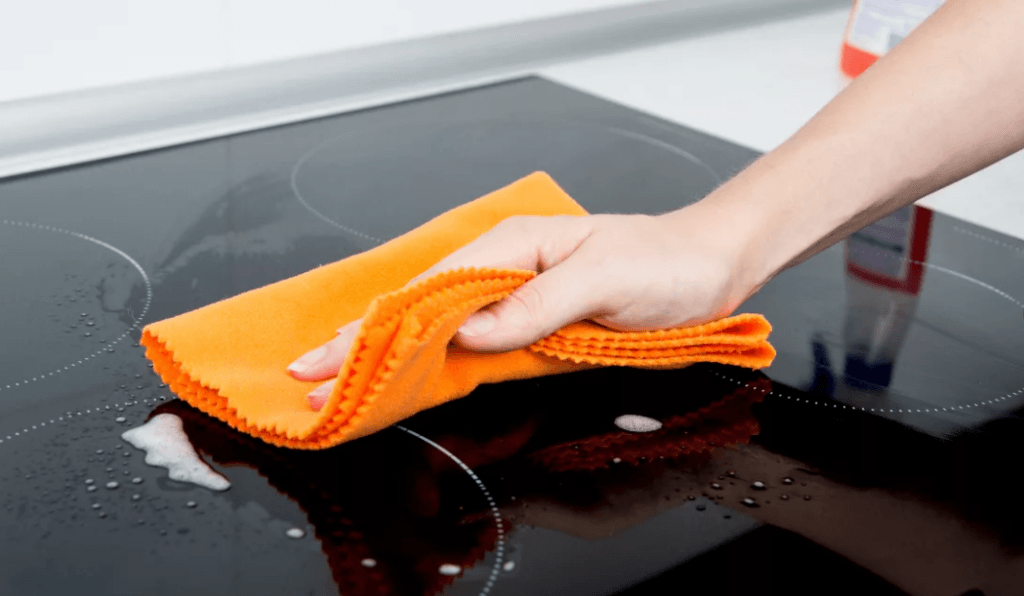
Never scrape the surface with a knife and do not use metal brushes - they will inevitably leave deep scratches on the glass ceramic hob.
It is also impossible to do without special detergents. It is best to start working with a small set - then it will be possible to remove different types of contamination - easily, quickly and efficiently:
- Detergent for tiles or window cleaning - perfect for cleaning the work surface of a glass-ceramic hob.
- Vinegar and soda.
- Olive oil will become a faithful assistant if you need to get rid of old carbon deposits. It is enough to apply a small amount of it on the stain and wait until it gets wet. And then you can remove the oil along with contamination with a soft sponge or cloth, and then degrease the surface.
As you can see, almost every kitchen has everything you need. There is no need to rush to the store and buy the advertised glass ceramic hob cleaners, which tend to be quite expensive.
When all of the above tools and means are collected, you can start cleaning the glass-ceramic panel.
How to clean a glass ceramic hob

This is a rather complicated process. In many ways, the instruction will depend on what kind of pollution you need to remove.For example, the procedures for removing greasy stains, old carbon deposits and burnt sugar will vary greatly. Therefore, let's talk about ways to deal with the most common pollution.
The sooner you start removing stains, the less time and effort cleaning will take. Fresh spots on a barely cooled surface are much easier to remove than dried ones in a few days.
But first, you need to prepare the workplace so that cleaning brings maximum benefit and does not harm even more.
Do not forget to disconnect the stove from the mains. Even if it is simply turned off, there is always a minimal risk of malfunction, due to which a person can get an electric shock while cleaning.
Also, in no case start cleaning before the stove has completely cooled down. Otherwise, you may encounter a number of problems. First, a person can burn himself on the hot glass ceramics. Secondly, foam sponges and rubberized wipes will melt and burn to the surface, further spoiling the appearance of the plate and significantly complicating further cleaning. Thirdly, if water gets on a hot stove, this will cause a temperature drop, which in some cases causes cracks in the glass. Fortunately, most modern models have dedicated residual heat sensors. Watch them to make sure that the surface is cold and you can start cleaning without fear of unpleasant consequences.
Having prepared the workplace, you can start cleaning the stove from various stains at home.
Greasy stains
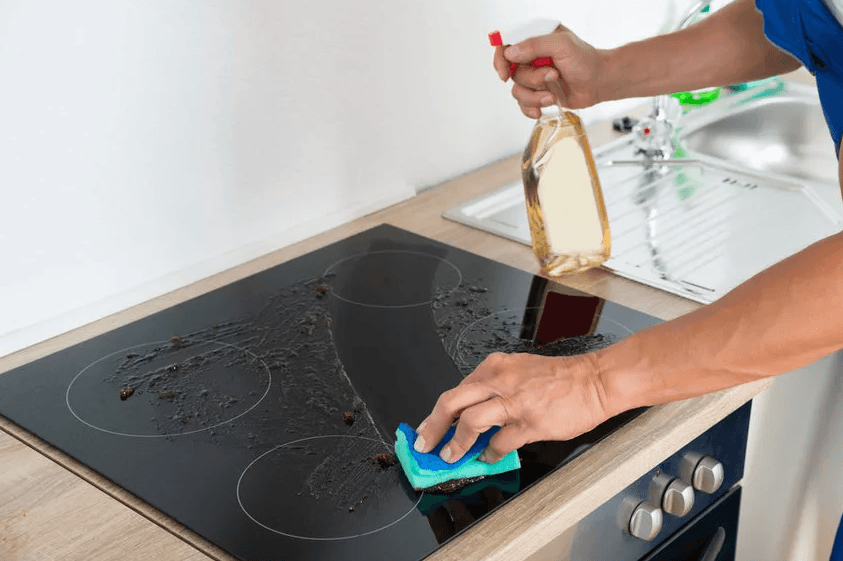
It is these spots that give owners the most problems. Fortunately, dealing with them is relatively easy. It is enough to apply the anti-grease gel on the stains and leave it on for a few minutes. Then you can gently remove it with a soft sponge or napkin, or simply wash the glass-ceramic hob with warm water - not a trace of stains will remain.
If there is no such gel, you can use regular soda. Stir it in a little water to form a thin slurry. Place it on top of the stains and let it sit for half an hour. During this time, even old grease stains will soak and can be easily removed with a napkin. The main thing is not to use dry soda in any case - there is a high risk of tiny scratches on the surface of the stove, which will greatly worsen its appearance.
Old soot
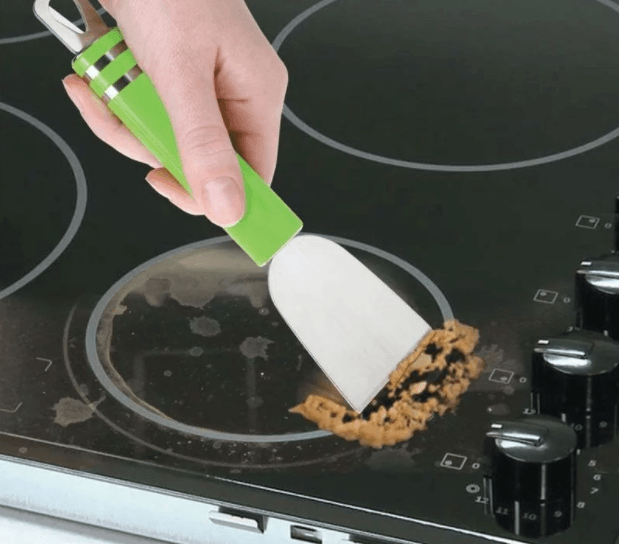
Usually it appears on the glass-ceramic plates of housewives who always do not have enough time to remove greasy spots immediately after they appear. They are more difficult to deal with than ordinary dirt. Therefore, it is especially important to know how to clean the old plaque from the ceramic hob. All work is done in several stages:
- Wash the surface with your usual detergent.
- Using a metal scraper, remove carbon deposits - you need to act carefully, press with the entire area of the scraper, and not with a corner, so as not to damage the surface.
- Apply baking soda gruel or grease-dissolving gel to old carbon deposits. Wait a few minutes.
- Use a damp cloth to remove most of the gruel or gel and clogging.
- Remove residual grease and detergent - it is best to use a microfiber cloth for this.
- Wait until the surface of the board is dry and polish it thoroughly with a cellulose cloth.
As you can see, if you approach the issue seriously enough and prepare all materials and tools in advance, you can easily clean the ceramic plate from the burnt layer without wasting extra time on work.
Burnt milk and sugar
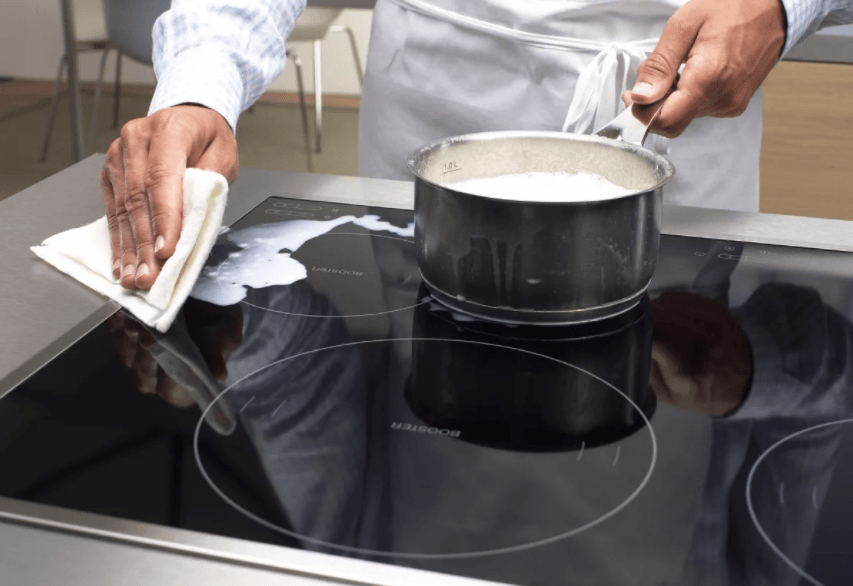
This cleaning is considered one of the least enjoyable. If hot milk is spilled on a hot surface, it quickly burns, forming a black film. Sugar melts almost instantly and turns into a foul-smelling, dark brown mass.
Experts recommend cleaning the surface of burnt sugar and milk immediately.That is, you do not even need to wait until the stove has completely cooled down - this is the only exception to the above rules. Otherwise, removing burnt spots will be even more difficult. You need to act carefully, but quickly.
First, turn off the power and as soon as the stove cools down a little, carefully remove the sugar and milk with a scraper. Never use silicone - it can burn on a still hot surface. Only metal, which must be handled carefully so as not to scratch the glass ceramics.
When most of the dirt has been removed, you can use a cloth or foam sponge, as well as detergent. If you have a melamine sponge on hand, use it. It is enough to moisten it well, then squeeze it out slightly and thoroughly wipe the entire stained surface. This usually removes the stain without the slightest trace - not even streaks will remain.
Fighting divorce
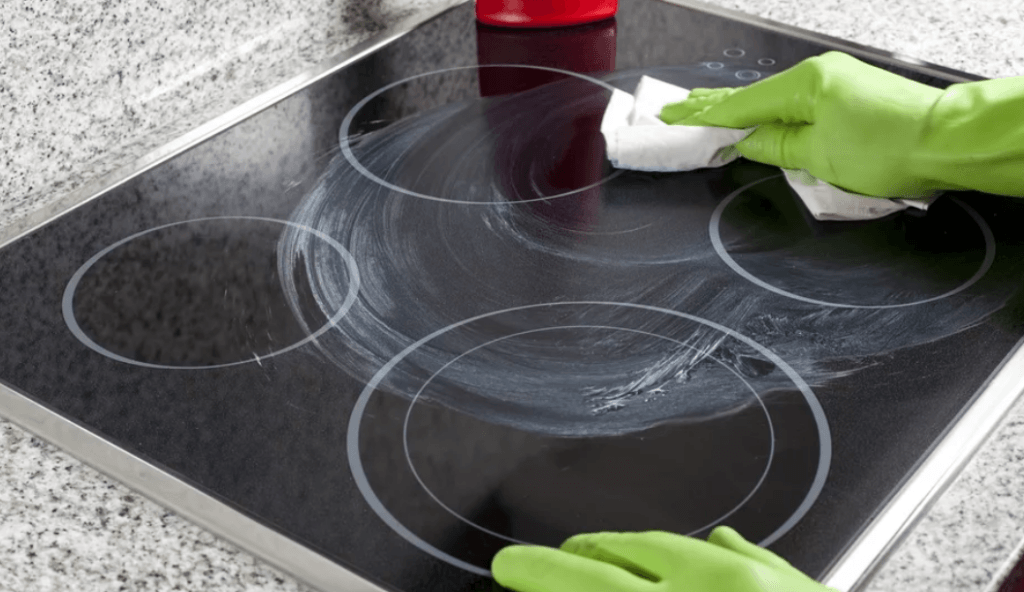
If dishwashing detergent is used to remove greasy streaks, in some cases this will lead to streaks. On the one hand, they do not interfere with the work of the stove at all. On the other hand, the aesthetic appeal is significantly reduced. Few people like having a dirty stove in their kitchen. But getting rid of such divorces in most cases is not as easy as we would like. Even the advertised window cleaners that promise perfect cleanliness are often not very effective at removing stains - you have to apply them several times.
But vinegar shows itself surprisingly well in such a situation. It is best to take nine percent. Dilute it with water in a 1: 1 ratio and a good stain remover is ready. You can dip a sponge in it and wipe the stove. Or you can dial it into a spray bottle and spray the entire surface, then wipe it with a soft cloth. In any case, there will be no trace of divorces.
What can harm glass ceramics
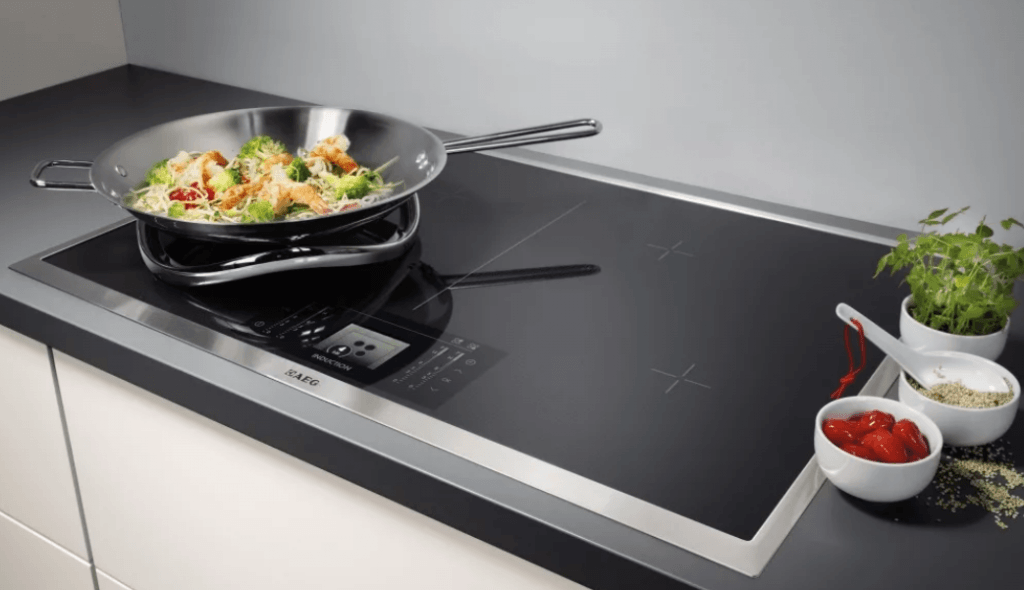
A glass ceramic hob is a rather expensive purchase. Therefore, every owner wants her to last as long as possible. To do this, you need to know some simple rules, the observance of which will reduce the risk of damage to equipment.
- Keep the surface clean. Any grain of sand can cause damage if you put a frying pan or pot on it and turn on the stove.
- Do not place a pot of cold water on a hot burner - temperature drops can ruin the stove.
- Protect the surface from mechanical damage - strong impacts, deep scratches.
- If the liquid "escaped" during cooking, immediately try to remove it before it gets on the adjacent hot plate.
As you can see, the rules are pretty simple. By remembering them and knowing how to clean the ceramic surface of the stove, you can enjoy perfectly working technology for many years.
Watch the video how to care for your glass ceramic hob
Conclusion
You have received enough useful tips to now know how to clean your glass-ceramic hob at home and avoid any problems - from mechanical damage to small stains. This means that the kitchen will always shine with cleanliness. As you can see, we used both folk remedies that are always at hand, and specialized detergents.

